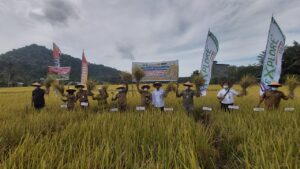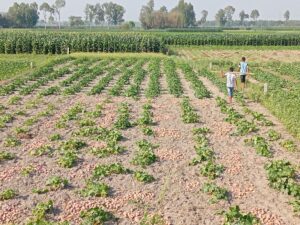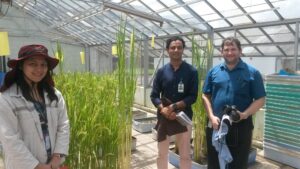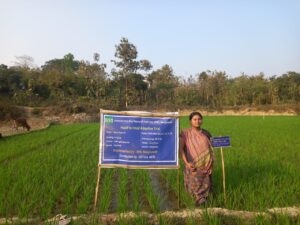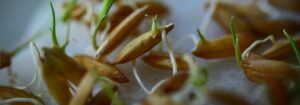
Water makes up 70% of our planet. But in spite of this vast availability, our fresh water reserve is finite. Over the years, improper use has led many to waste this precious natural resource, unaware of its dire crippling effects on the world’s food supply balance, particularly for rice—the staple food of about 3 billion people around the world.
Like all other plants, rice needs water to survive. However, unlike most plants, it needs twice as much water to produce good yields. For 1 kg of rough rice, for example, an average of 2,500 liters of water needs to be supplied by rainfall and/or irrigation (see How much water does rice use? on pages 28-29 of Rice Today Vol. 8, No. 1). About 1,400 liters are used up in evaporation and transpiration, while the remaining 1,100 liters are lost by seepage and percolation. A farmer, then, constantly needs to ensure that sufficient irrigation water is provided (to complement rainfall if that is insufficient) to match all these outflows. Note that transpiration (the process by which the rice plant absorbs water, takes it up to bring essential nutrients from roots to leaves, then releases it to the atmosphere) is the only productive water use, as it helps the plant stay alive and healthy.
Growing water scarcity
Fresh water for agriculture around the world, however, is becoming increasingly scarce, thereby threatening rice productivity and, consequently, the world’s food supply. In the next 25 years, some 15–20 million hectares of irrigated rice are projected to suffer some degree of water scarcity, particularly the wet-season irrigated rice regions of China, India, and Pakistan. Dry-season irrigated rice areas everywhere in Asia rely on expensive irrigation water and need to be managed in the most water-efficient way. The causes for increasing water scarcity are diverse and location specific. They include falling groundwater tables, chemical pollution, malfunctioning of irrigation systems, and increased competition from other sectors such as urban and industrial users.
In the face of this troubling reality, the International Rice Research Institute (IRRI) has developed several water-saving technologies to help farmers cope better with water scarcity in their paddy fields. Farmers primarily need to reduce the nonproductive outflows (percolation, seepage, and evaporation), while maintaining transpiration flows. This can be done during land preparation, crop establishment, and the actual crop growth period.


